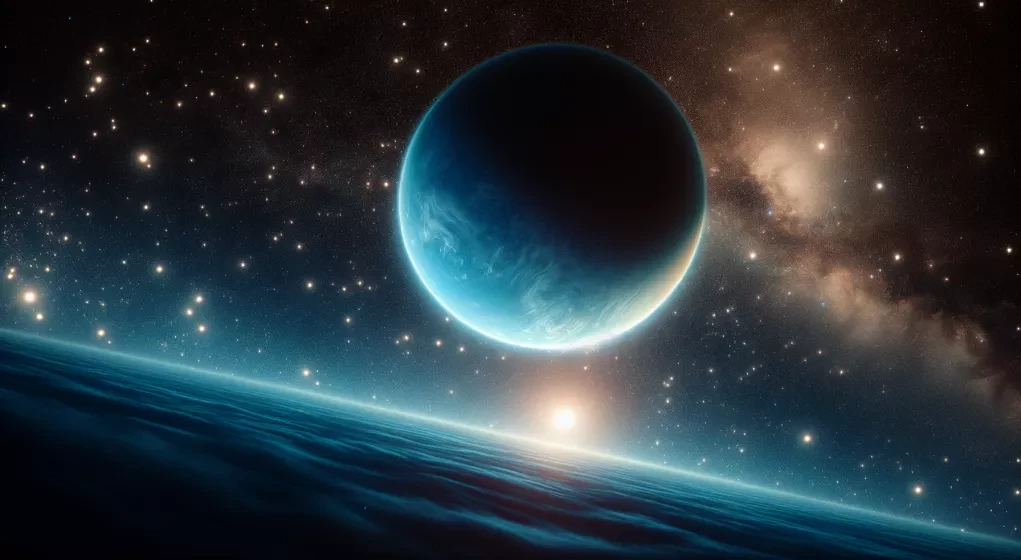In the azure vastness above our heads, the cosmos whispered its latest secret, one that could redraw our very understanding of the heavens. Astronomers, those tireless sentinels of the night, peered through the eyes of their technological marvels and uncovered an extraordinary cosmic jewel—a planet of such rare beauty and peculiarity it almost defies imagination.
This celestial wanderer, an exoplanet both strange and wondrous, dances around a star that mirrors our own Sun, but does so with a peculiarity that beguiles the mind. Unlike the orderly procession of planets within our solar system, this newly discovered world carves its orbit in a mere four of our Earth days, skimming its home star with a proximity that sets its skies ablaze with the star’s fierce radiance.
Indeed, this exoplanet exists within an extraordinary echelon, positioned within its star’s “Goldilocks zone” — a region not too hot nor too cold, where the alchemy of life has a chance to stir. The discovery tantalizes with potential, suggesting that we have skimmed the surface of a well of possibilities, compelling scientists and dreamers alike to ponder over the question that has haunted mankind for an eternity: Are we alone?
Yet, the enchantment of this planetary ballet extends beyond the mere existence of the exoplanet. The methods by which this discovery was wrought represent a pinnacle of human ingenuity. Utilizing a symphony of data from spaceborne observatories and Earth-bound telescopes, astronomers stitched together a tapestry of information that revealed this planet’s signature against the cosmic backdrop.
The world’s name, a string of letters and numbers that would seem cryptic to the uninitiated, resonates as a symbol of triumph within the hearts of those who seek to unravel the universe’s persistent enigmas. Its discovery marks a new era of cosmic exploration where distant worlds are not just dots in the vast void but are places with their own stories waiting to be told.
As this news echoes through the scientific community and piques the curiosity of those with their gaze turned skyward, one can only marvel at our relentless pursuit of knowledge. The heavens, once the realm of gods and myth, are now a canvas for our boundless imagination, each star potentially a sun to another planet, and each planet a siren call to the human spirit’s insatiable curiosity.
In recognizing this moment of astronomical wonder, we grasp a glimpse of our place in the grand tapestry of existence—a place where every discovery propels us forward in our endless journey to understand the cosmos and, ultimately, ourselves.






